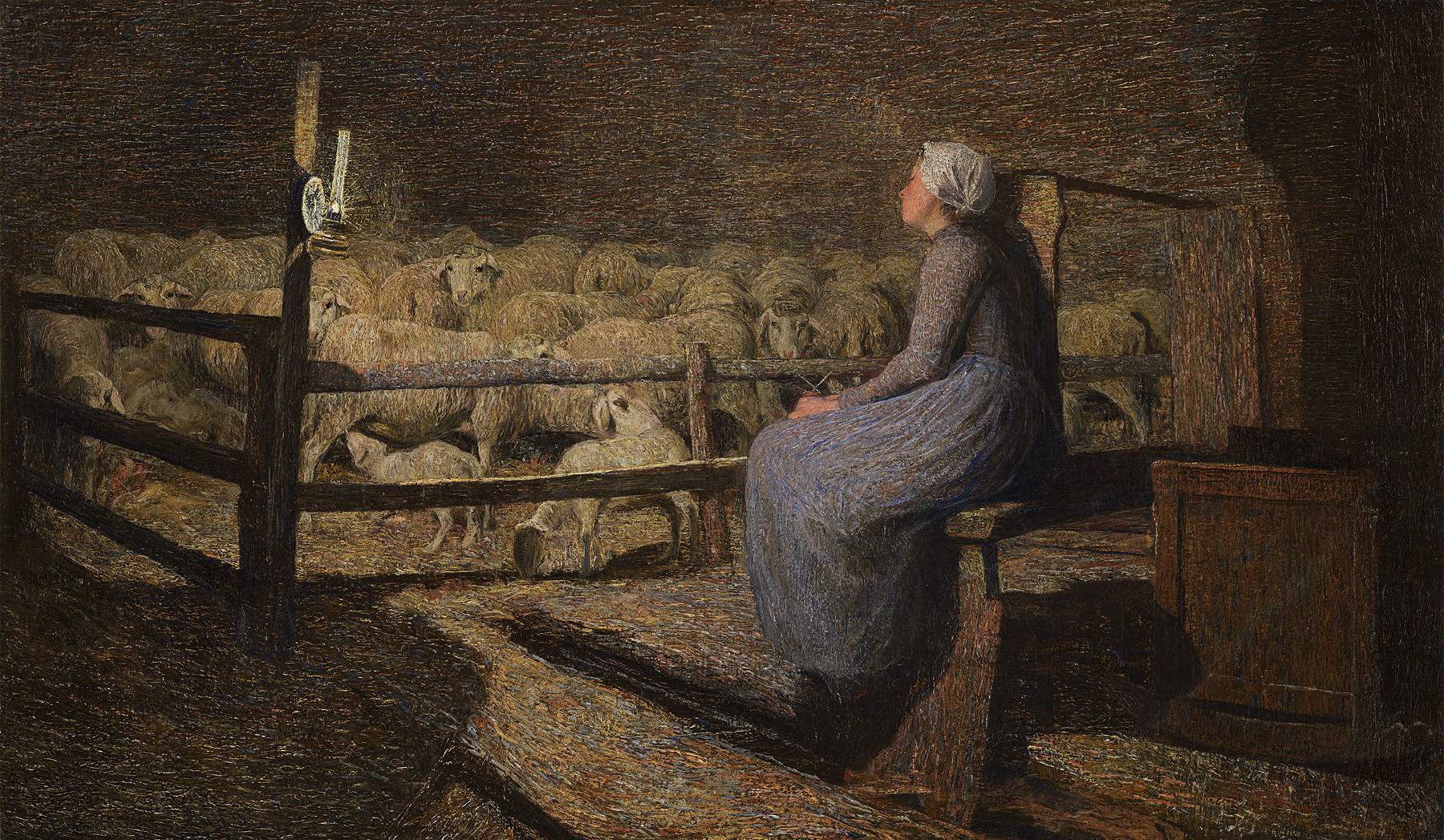An exhibition in Sankt Moritz on the genesis of a Segantini masterpiece, All'ovile
Giovanni Segantini. In the fold. Genesis of a Masterpiece. This is the title of the exhibition curated by Annie-Paule Quinsac, author of the catalog raisonné of Giovanni Segantini, and produced in collaboration with the Maspes Galleries in Milan, which presents one of the Trentino master’s most important Divisionist works, created in 1892, and entitled All’ ovile.
All ’ovile is part of a cycle of three paintings dedicated to the effects of lantern light in an enclosed, dark environment that re-propose, in a modern, experimental language, the seventeenth-century luminist tradition, from Caravaggio to the Flemish and Rembrandt etchings, which Segantini knew well. The first, the most monumental, The Two Mothers. Study of a Lantern of 1889, is at the Civica Galleria d’Arte Moderna in Milan; the second, All’ arcolaio, of 1891, has been in the National Gallery in Adelaide, Australia, since 1898. In All’ ovile, precisely because of the more intimate dimension of this painting. the magical effect of the light enveloping the scene is particularly perceptible.
As for the Divisionist technique, here Segantini goes beyond the suggestive rendering of light by using juxtaposed dashes of pure colors. The use of powdered and particle gold incorporated into the fresh impasto allows him to accentuate the vibrations of light. As always, his ability to suggest the essence of things, their physicality, is striking: from the fleece of the sheep to the fabric of the woman’s dress, to her face and the wood of the manger and cradle. That the motif of the lantern light in an interior with its symbolic valences fascinated and inspired Segantini is shown by other works in the exhibition, such as the drawings I miei modelli (1890) and All’ arcolaio (1891-93). These are complemented by two masterpieces from the Otto Fischbacher Giovanni Segantini Stiftung collection, on deposit at the Engadine museum: a painting and a drawing both titled Return to the Barn.
If the lantern light inside the stable symbolizes warmth, security, and respite, even if only temporary, from the toils of the shepherd’s life, Return to the Shepherd’s Fold of 1888 depicts instead an exterior dominated by the cold, hostile light of an autumn twilight. The atmosphere of sadness and resignation, accentuated by the curved figure of the weary shepherdess returning from work, is mitigated by the brightly lit entrance to the barn, a promise of shelter and rest. In the later drawing, Return to the Barn of 1891-92, the same motif is represented in a symbolically accentuated form.
Completing the exhibition is a section presenting the results of non-invasive diagnostic investigations, carried out by Davide Bussolari and Stefano Volpin, which allow us to go beyond the aspects perceptible to the naked eye, and “enter” the artist’s slow creative path and discover the existence of an afterthought that was later erased.
Accompanying the exhibition is a bilingual (Italian/English) catalog Gallerie Maspes editions.
Information: Tel. +41 81 833 44 54; info@segantini-museum.ch / info@kubus-sils.ch Website: www.segantini-museum.ch
Image: Giovanni Segantini, All’ovile (1892). Courtesy of Gallerie Maspes.
 |
| An exhibition in Sankt Moritz on the genesis of a Segantini masterpiece, All'ovile |
Warning: the translation into English of the original Italian article was created using automatic tools. We undertake to review all articles, but we do not guarantee the total absence of inaccuracies in the translation due to the program. You can find the original by clicking on the ITA button. If you find any mistake,please contact us.




























